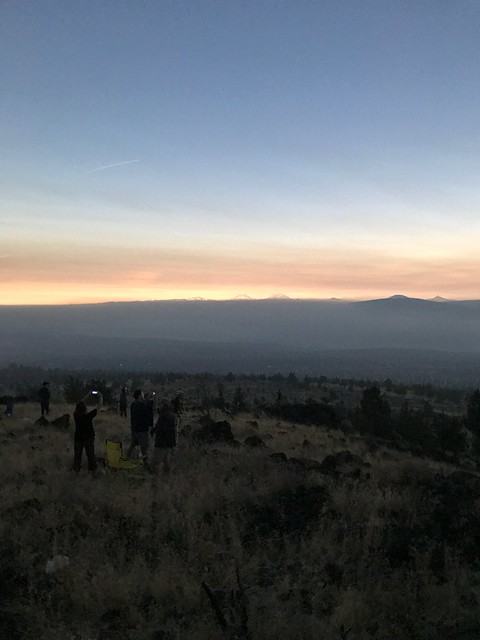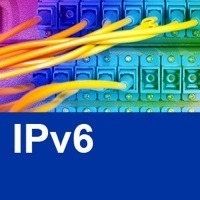Are Containers and Serverless Computing Set to Battle for Cloud Control?
 Some predict a future where containers and serverless computing will co-exist.
Some predict a future where containers and serverless computing will co-exist.
 Some predict a future where containers and serverless computing will co-exist.
Some predict a future where containers and serverless computing will co-exist.
 U.S. operators AT&T and Verizon will be responsible for much of the early 5G revenues.
U.S. operators AT&T and Verizon will be responsible for much of the early 5G revenues.
 Intel and World Wide Technology launch new NFV testing facility; Barefoot and Cisco do IPv6 segment routing.
Intel and World Wide Technology launch new NFV testing facility; Barefoot and Cisco do IPv6 segment routing.
 Will the VMware-AWS partnership steal the show?
Will the VMware-AWS partnership steal the show?

The social and economic benefits of the Internet cannot be realized without users’ ability to communicate and organize privately, and, where appropriate, anonymously. Data collection warrants must strike a balance to protect these benefits without impeding law enforcement’s ability to enforce the law. In recent weeks, the United States Department of Justice’s (DoJ) conflict with DreamHost, a website hosting service, has underscored the importance of this balance.
Hey, it's HighScalability time:

View of the total solar eclipse from a hill top near Madras Oregon, August 21, 2017. As totality approaches, dragons gorge on sun flesh; darkness cleaves the day; a chill chases away the heat; all becomes still. Contact made! Diamonds glitter; beads sparkle; shadow band snakes slither across pale dust; moon shadow races across the valley, devouring all in wonder. Inside a circle of standing stones, obsidian knives slash and stab. Sacrifices offered, dragons take flight. In awe we behold the returning of the light.
 It's VMware's largest-ever telco deal.
It's VMware's largest-ever telco deal.
 RFC 8215 “Local-Use IPv4/IPv6 Translation Prefix” was recently published, reserving the IPv6 prefix 64:ff9b:1::/48 for local use within domains enabling IPv4/IPv6 translation mechanisms.
RFC 8215 “Local-Use IPv4/IPv6 Translation Prefix” was recently published, reserving the IPv6 prefix 64:ff9b:1::/48 for local use within domains enabling IPv4/IPv6 translation mechanisms.
This allows the coexistence of multiple IPv4/IPv6 translation mechanisms in the same network, without requiring the use of a Network-Specific Prefix assigned from an allocated global unicast address space.
The well-known prefix 64:ff9b::/96 was originally reserved by RFC6052 for IPv4/IPv6 translation, but several new translation mechanisms such as those in RFCs 6146 and 7915 have subsequently been defined that target different use cases. It’s therefore possible that a network operator may wish to make use of several of these simultaneously, hence why a larger address space has been defined to accommodate this.
The shortest translation prefix being deployed in a live network was observed as being a /64, hence /48 was chosen as being on a 16-bit boundary whilst being able to accommodate multiple instances of /64.
If you’re interested in finding out more about IPv4/IPv6 translation mechanisms, there’s a few Deploy360 blogs on NAT64 and 464XLAT amongst others.
The post RFC 8215: Local-Use IPv4/IPv6 Translation Prefix published appeared first on Internet Society.
What does grayfield mean in IT ?
The post Dictionary: Grayfield appeared first on EtherealMind.
The post Worth Reading: Open core, open perimeter appeared first on rule 11 reader.
Abidjan became the third West African city to hold the annual Africa Peering and Interconnection Forum (AfPIF), attracting top African and global players in the Internet ecosystem.
This year’s forum attracted 227 participants working in IXPs, ISPs, governments, content carriers, network providers, hardware providers, and software service providers among others. The meeting tool, which allows participants to discuss ways to exchange content, had 276 registered users who scheduled 170 meetings. Twenty networks introduced themselves during “Peering Introductions” session, held every day. This year there were 23 sponsors: Seacom, Liquid Telecom, Angonix, Angola Cables, De Cix, Linx, Adva, Afrinic, Akamai, Dolphin, Facebook, Flexoptix, France IX, Google, icolo.io, Main One, Netflix, Netnod, Yahoo, Medalion, MTN, Teraco, and ARTCI.
Getting more statistics
Research conducted by PCH reinforced the fact that most peering agreements have no formal agreement. The study done in 2016 found that 99 per cent of peering agreements in 148 countries were through a handshake. The study asked questions such as: are there formal agreements, is the peering arrangement symmetrical, is the content is IPv6 or IPv4, and what are the laws governing the agreement. Out of the 1,935,822 agreements, 49 percent comprised of matching peers, meaning it was easy Continue reading
Abidjan became the third West African city to hold the annual Africa Peering and Interconnection Forum (AfPIF), attracting top African and global players in the Internet ecosystem.